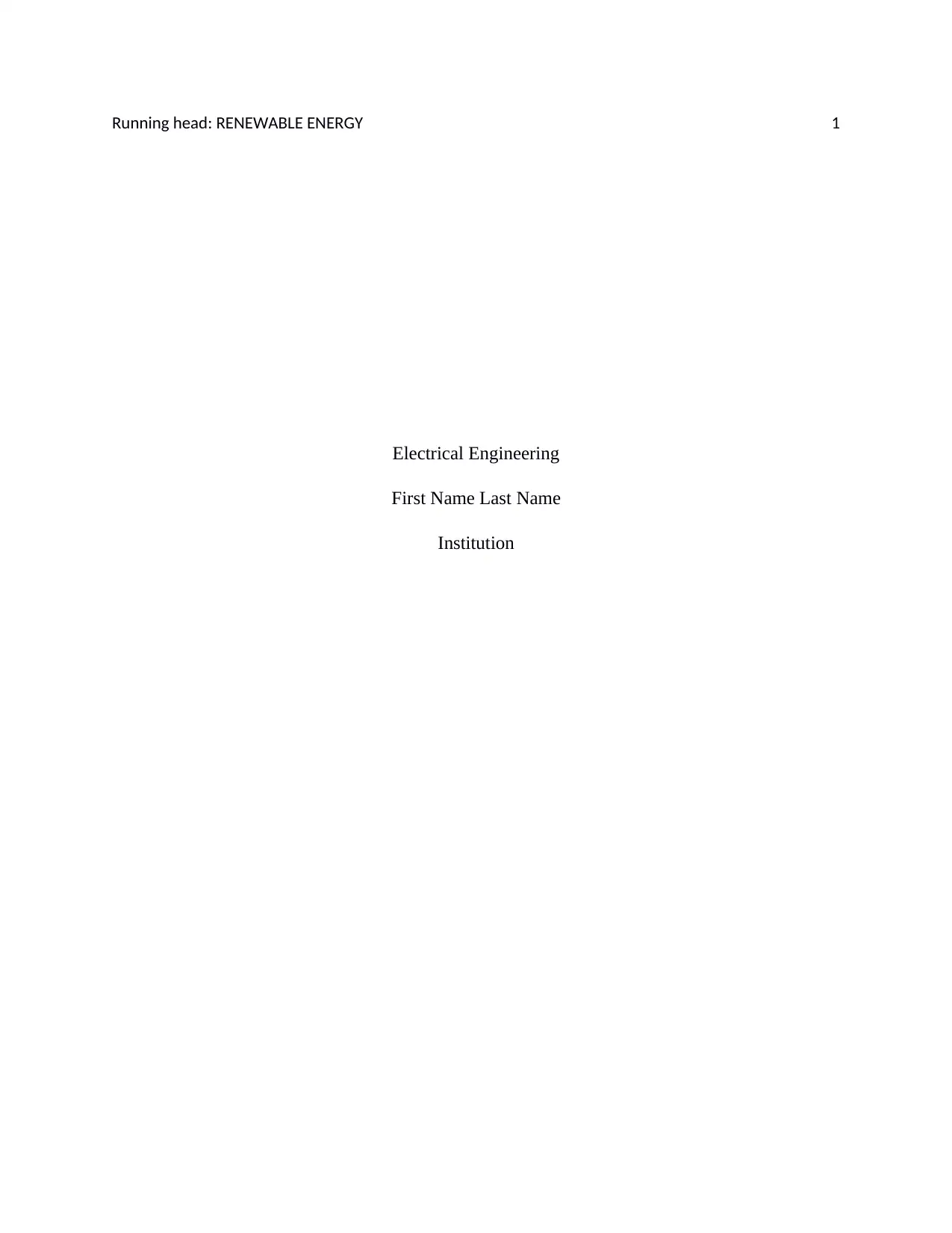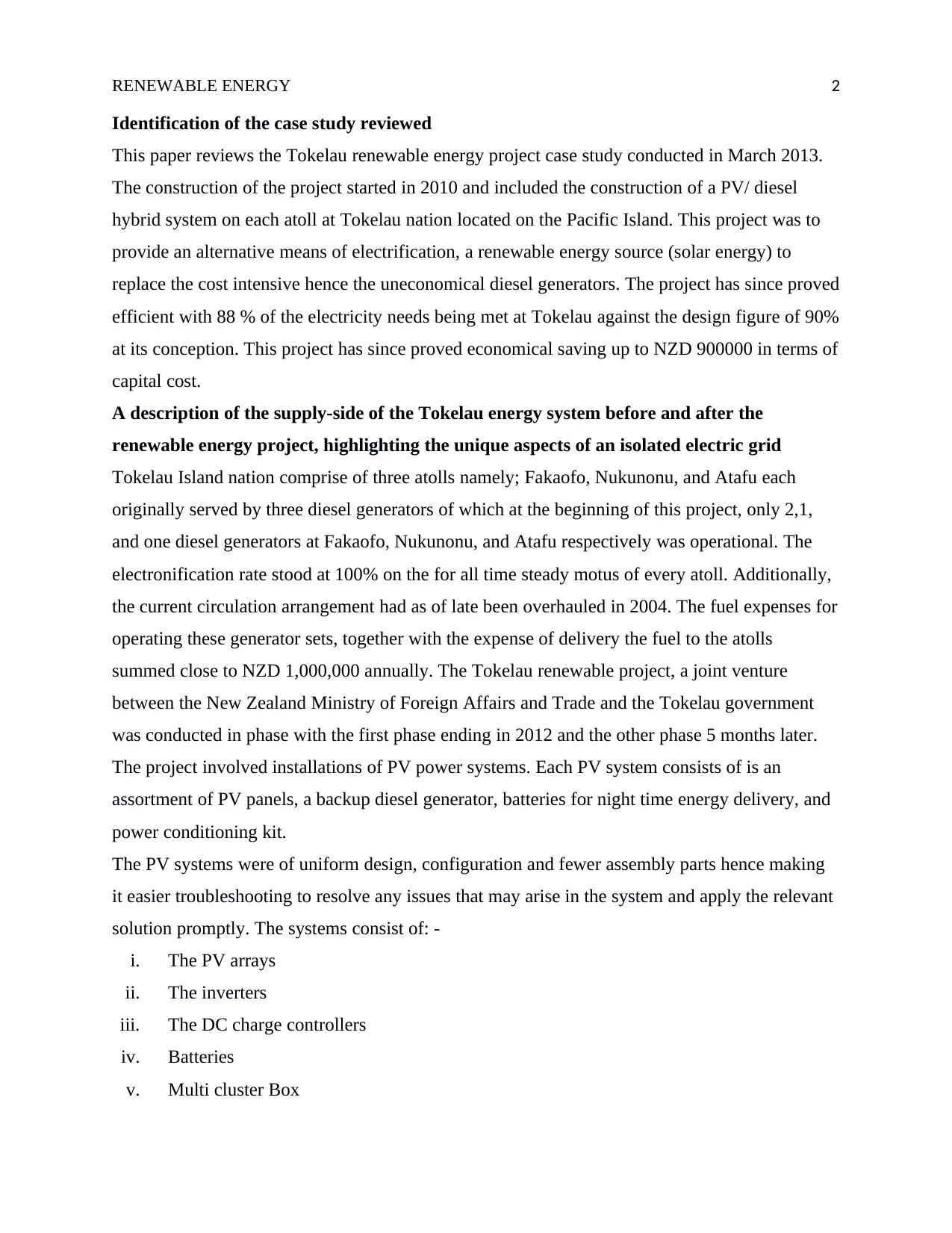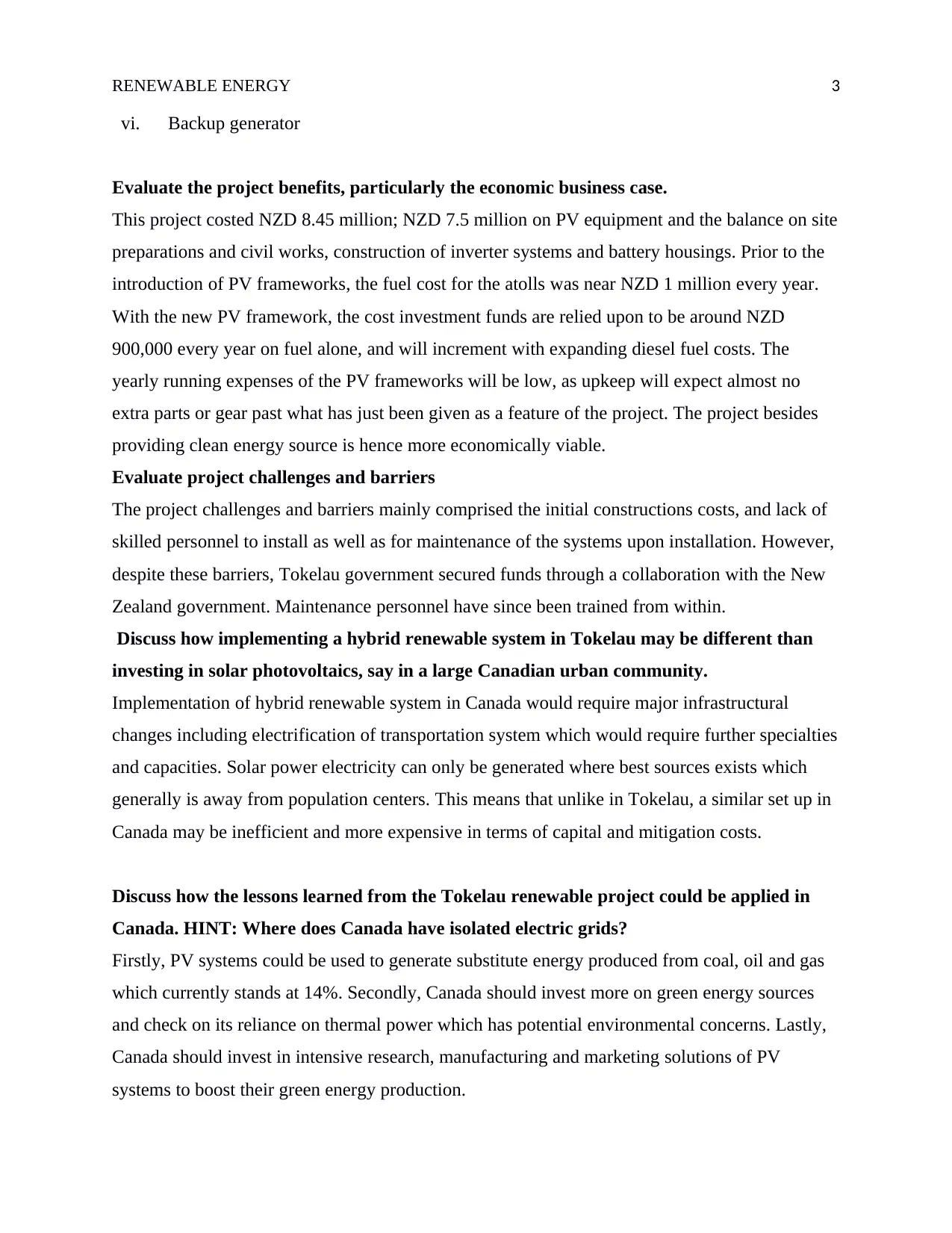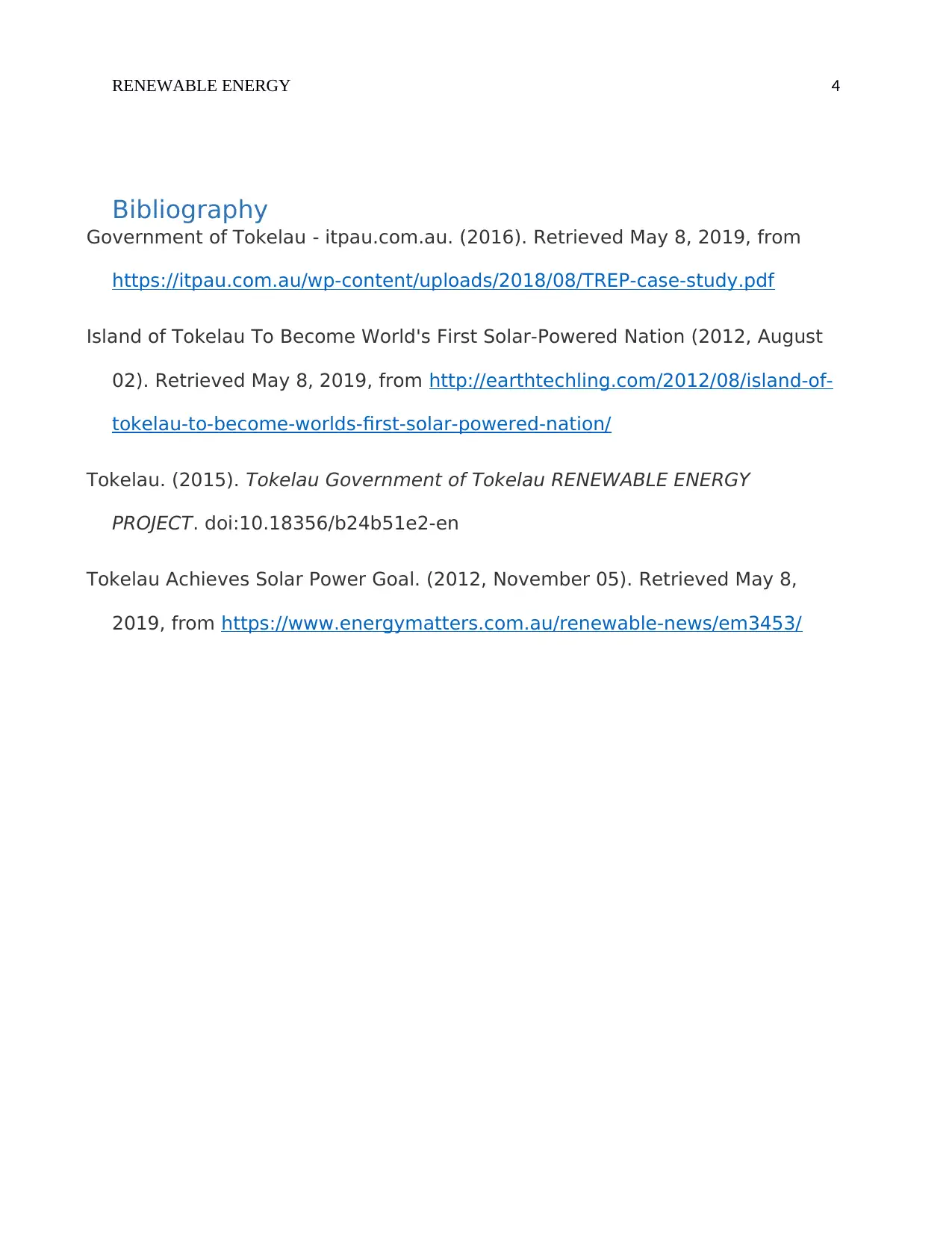Analysis of the Tokelau Renewable Energy Project Case Study Report
VerifiedAdded on 2023/03/17
|4
|918
|35
Report
AI Summary
This report analyzes the Tokelau Renewable Energy Project, a case study conducted in March 2013, focusing on the construction of a PV/diesel hybrid system on the Pacific Island nation of Tokelau. The project aimed to replace cost-intensive diesel generators with solar energy, achieving 88% electricity needs met, close to the designed 90%, and saving up to NZD 900,000 in capital costs. The report details the pre- and post-project energy systems, highlighting the unique aspects of the isolated electric grid. The hybrid system includes PV panels, backup diesel generators, batteries, and power conditioning equipment. The analysis evaluates the project's economic viability, challenges (initial construction costs and lack of skilled personnel), and compares its implementation to a Canadian urban setting. Lessons learned from the Tokelau project are discussed, including potential applications in Canada's isolated electric grids and the need for investment in green energy sources, research, and PV system manufacturing. The report concludes by referencing relevant sources and provides insights into the project's success and broader implications for renewable energy adoption.
1 out of 4









![[object Object]](/_next/static/media/star-bottom.7253800d.svg)